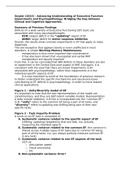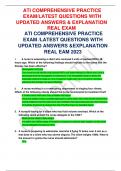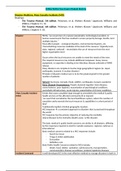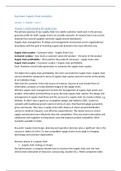Snyder (2015) - Advancing Understanding of Executive Function
Impairments and Psychopathology: Bridging the Gap between
Clinical and Cognitive Approaches.
Summary of Previous Findings
Deficits on a wide variety of Executive Functioning (EF) tasks are
associated with many psychopathologies.
- OCD: largest deficit in the “updating” aspect of EF
- ADHD: larger deficit for motor response inhibition
Overall, the results show common impairments in EF that apply to many
diagnoses.
The one exception that appears barely or even unaffected in most
disorders, is simple Working Memory Maintenance;
- manipulation is thus more impaired than maintenance.
- It has also been shown that visuospatial and verbal WM
manipulation are equally impaired
From this, it can be concluded that WM deficits in these disorders are due
to impairment in the Central Executive aspect of WM. And again, it is
consistent with the view that there are broad impairments in EF
associated with psychopathology, rather than impairments in a few
individual specific aspects of EF.
It is now important to build on the foundations of previous research
to better understand the specific mechanisms and causal processes
contributing to EF deficits in psychopathology, in order to move toward
clinical applications.
Figure 1 – Unity/Diversity model of EF
It’s important to note that the two representations of the model are
complimentary, and they are both latent variable models. Representation
A does include inhibition, in B this is incorporated into the “common EF”.
In B, “unity” refers to the common EF being a part of all tasks, and
“diversity” refers to updating and shifting being part of their own
specific tasks.
Figure 2 – Task Impurity Problem
A score on an EF task is composed of:
A. Systematic variance related to the specific aspect of EF
(shifting, updating) targeted by that one task. (so, actually
measuring the intended aspect)
B. Systematic variance related to the common EF; this variance is
shared across multiple types of EF tasks due to common EF being
part of all the tasks. (so, you always partially measure common EF
in any task)
C. Systematic variance related to non-EF aspects of the task,
such as:
o Articulation speed
o Visual processing
o Etc.
D. Non-systematic variance: Error!
Impairments and Psychopathology: Bridging the Gap between
Clinical and Cognitive Approaches.
Summary of Previous Findings
Deficits on a wide variety of Executive Functioning (EF) tasks are
associated with many psychopathologies.
- OCD: largest deficit in the “updating” aspect of EF
- ADHD: larger deficit for motor response inhibition
Overall, the results show common impairments in EF that apply to many
diagnoses.
The one exception that appears barely or even unaffected in most
disorders, is simple Working Memory Maintenance;
- manipulation is thus more impaired than maintenance.
- It has also been shown that visuospatial and verbal WM
manipulation are equally impaired
From this, it can be concluded that WM deficits in these disorders are due
to impairment in the Central Executive aspect of WM. And again, it is
consistent with the view that there are broad impairments in EF
associated with psychopathology, rather than impairments in a few
individual specific aspects of EF.
It is now important to build on the foundations of previous research
to better understand the specific mechanisms and causal processes
contributing to EF deficits in psychopathology, in order to move toward
clinical applications.
Figure 1 – Unity/Diversity model of EF
It’s important to note that the two representations of the model are
complimentary, and they are both latent variable models. Representation
A does include inhibition, in B this is incorporated into the “common EF”.
In B, “unity” refers to the common EF being a part of all tasks, and
“diversity” refers to updating and shifting being part of their own
specific tasks.
Figure 2 – Task Impurity Problem
A score on an EF task is composed of:
A. Systematic variance related to the specific aspect of EF
(shifting, updating) targeted by that one task. (so, actually
measuring the intended aspect)
B. Systematic variance related to the common EF; this variance is
shared across multiple types of EF tasks due to common EF being
part of all the tasks. (so, you always partially measure common EF
in any task)
C. Systematic variance related to non-EF aspects of the task,
such as:
o Articulation speed
o Visual processing
o Etc.
D. Non-systematic variance: Error!








